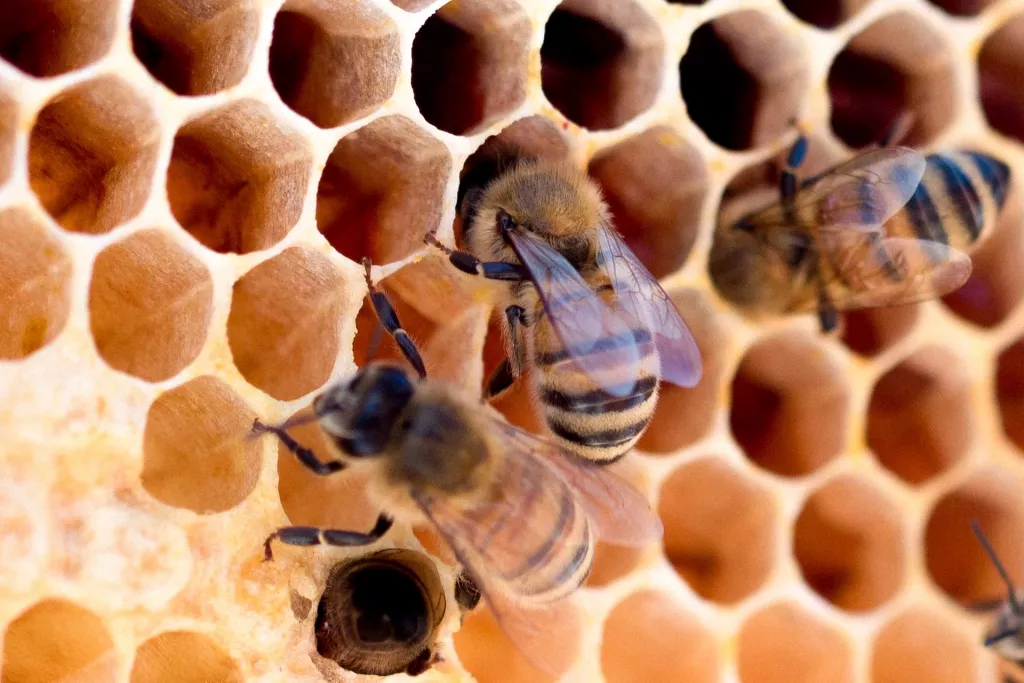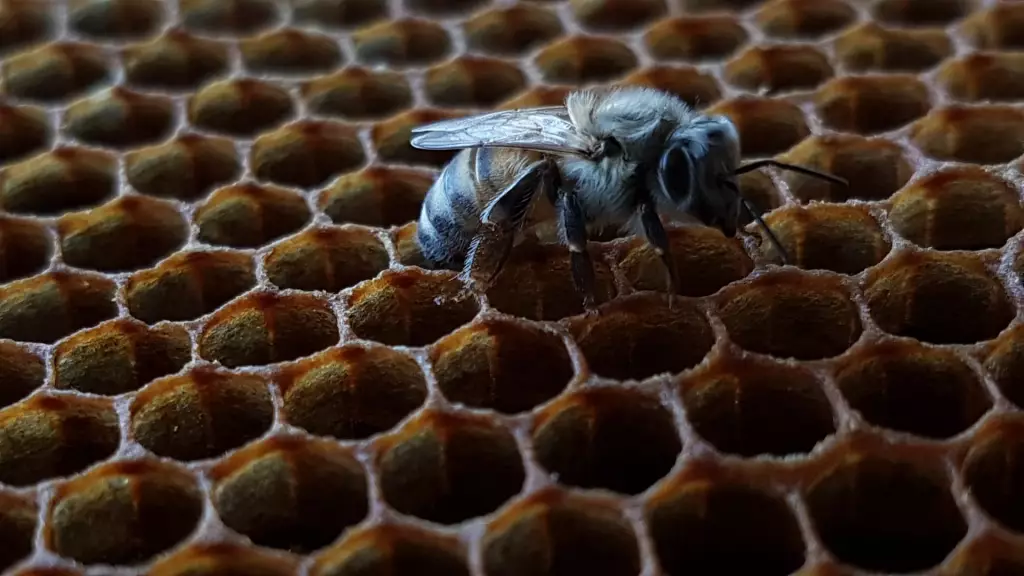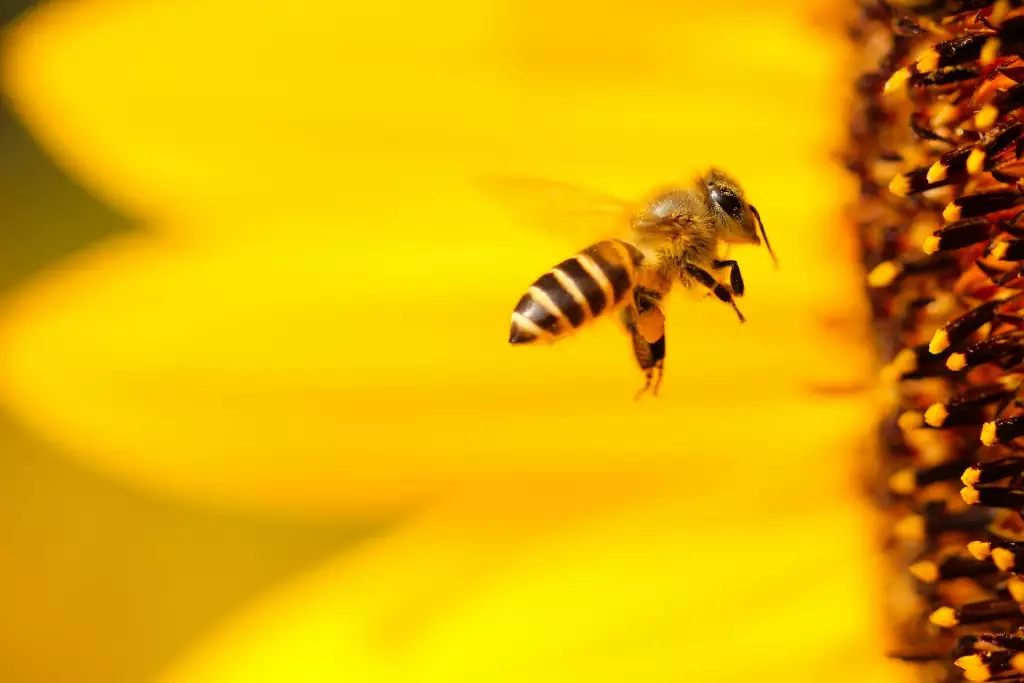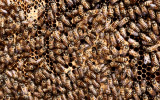How Long Does it Take Bees to Make Honeycomb?
Everything about honeybees is truly amazing, and one of the most interesting facts is how quickly they can build honeycombs. And it's no wonder—bees have been making honeycombs for over 150 million years.
In order to make honeycombs, it would take honeybees 7 days to 2 months in total. The exact amount of time it takes bees to make honeycomb varies greatly, depending on the weather, the size of the hive, and other environmental factors.
These hexagonal comb cells are really one of nature's most perfect structures. Let's explore the process of how bees make honeycombs.
Summary
- It takes days or even months for bees to build their honeycomb.
- Several factors can have a significant impact on honeycomb production.
- Their habitat and even weather conditions can prolong the production of bees to create a honeycomb.
- Beekeepers can provide easy access for bees to successfully create honeycombs in their hive.

On this page:
Bees Construct Honeycombs for 1–2 Weeks
The process of making a single comb can take anywhere from 4 to 7 days. The worker bees are incredibly organized and efficient, allowing them to build the honeycomb at a rapid pace. In some cases, it can take as little as two weeks for an entire hive to be filled with comb cells. After that, the bees can start storing honey and raising their young.
To make honeycomb, the worker bees use their special wax-producing glands to make tiny flakes of wax called beeswax. Then, they chew the wax, including a bit of honey and pollen, to create beeswax.
Although the process isn't that easy, they first need to gather nectar from flowers to make the honey. Once collected, they store the nectar in their stomachs and return to the hive. Here, other worker bees help to break it down further and evaporate the water content.
Once the honey has been created, the worker bees create hexagonal-shaped comb cells. They attach them together by chewing the wax and using their mandibles to shape it into a pretty honeycomb structure.
The bees also need to periodically chew the wax wall in order to maintain the honeycomb's structure. This is because the wax cells can become soft and weak over time, so they need to be regularly reinforced by the bees.
Key Components of A Honeycomb

Bees need a lot of resources to make honeycomb, these are some of the key ingredients:
Pollen
Bees use pollen to give the comb cells their strength and rigidity. Pollen can be obtained from flowers, trees, and other plants in the local area.
In an area where flowers are abundant, this shouldn’t be a problem. However, if there are no flowers nearby, the bees may need to travel further distances in order to find what they need.
Nectar
The nectar is used by bees to make honey which is stored in the comb cells. The nectar is collected from flowers and trees, and then broken down by enzymes produced in the bee's body to create honey.
Wax
Bees use wax to construct their honeycomb as well as to reinforce the comb cells and keep them strong and rigid. To be exact, beeswax is produced from special glands located on their abdomens.
Temperature
Honeybees like to work at a temperature of around 35 degrees Celsius. If the temperatures are too low, they won't have enough energy to produce wax and build the honeycomb. On the other hand, if the temperature is too high, it will affect the process of building the honeycomb.
Honeycombs require a certain temperature to maintain their structure, so bees need to constantly monitor the temperature of their hive.
Weather conditions
Weather can also have a major impact on the honeycomb-building process. If it's too rainy or windy, the bees won't be able to collect the nectar they need, and the temperature of their hive can easily fluctuate.
That's why, during the winter, bees tend to stay in their hives and don't venture out for nectar. It's also why it takes longer for them to construct the honeycomb during this time of the year.
Size of the hive
The size and shape of the hive can also affect how quickly honeycombs are built. If the hive is too small, the bees won't be able to build a large honeycomb, and will take longer to do so. On the other hand, if the hive is too big, it can be difficult for them to maintain a steady temperature.
Resources
Before even getting started, the bees must be able to find resources such as pollen, nectar, and wax in their local area. Without these ingredients, they won't be able to produce honeycomb.
Aside from that, they will need to consider their needs, such as water, shelter, and food. If these things aren't provided for the bees, it will take them a lot longer to build their honeycomb.
Environment
Bees are smart, and they would usually nest in a place where they could find the right environment to build their honeycomb. The environment must be free of hazards such as predators, parasites, and strong winds.
Beekeepers make sure that their honeybees have the right environment to work in. They provide hives, feeders, and other materials to ensure that the bees have everything they need to build a strong, stable honeycomb.
There are troubles that beekeepers might face when it comes to constructing honeycombs. Weather conditions can be a major factor in the amount of time needed for construction, as the honeycomb cannot be built in the rain. Additionally, the availability of resources such as nectar, pollen, and enough space within or around the hive can impede construction.
Why Do Bees Make Honeycomb?

Bees make honeycombs for a few reasons. Most notably, the comb cells act as storage spaces where bees can store their honey, pollen, and larvae. The cells also provide insulation for the hive and keep the temperatures stable.
As much as we humans love to eat honey, the bees need it even more for survival. It provides them with energy and sustenance throughout the winter months. The comb cells also provide a place for the young bees to grow and develop.
These products made by bees are essential for them to survive and the process of making honeycomb is just a part of that. That's why bees are always in a rush to build their honeycomb and make sure they have enough space for their honey and larvae.
How Long Do Honeycombs Last?
Honeycombs usually last for years and even forever, as long as the bees are able to maintain them. The workers will periodically chew the wax to reinforce it and make sure that it remains strong.
There are several key factors that can affect the lifetime of a honeycomb. These include environmental conditions such as humidity, temperature, and the place where the honeycomb is made. If the conditions are unsuitable, they may need to rebuild the comb or abandon it altogether.
Among all the factors in order to maintain a honeycomb, when one of each condition is not met then the bees may need to rebuild the comb. It's extremely important to properly maintain a honeycomb, which includes the conditions and the bee's efforts to rebuild.
On the other hand, if you have a honeycomb that you want to preserve, storing it in a jar and sealing it with a lid can help to keep it intact for years. This will also protect it from moisture and keep the wax from becoming soft and weak.
These combs are 100% edible and are actually a pretty healthy snack. Although they are sticky as honey, they are great for adding to a cup of tea or eating as is. The honeycomb is also an excellent source of antioxidants and minerals, so it's a great treat to have on hand.

